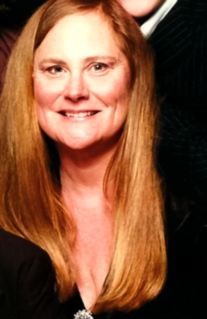Lucidity and Self-Realization through
Emotional Surrender
Beverly (Kedzierski Heart) D’Urso, Ph.D.
Presentation at the International Association for the Study of Dreams (IASD) Conference, Berkeley, CA, June 2012.
Copyright 2012
When we fail to internally experience a strong emotion in our bodies completely, life seems to give us more opportunities to do so in both our waking life and in our sleeping dreams.
We experience new dramas or dreams, sometimes with different characters and environments, but similar emotions. If we pay attention, we can notice patterns of such recurring emotional dramas or dreams.
I will give personal examples of dealing with such emotional dramas and dreams, and compare my lucidity work to a contemporary, psycho-spiritual teaching of self-realization.
As a child, I learned to become aware of such patterns in the form of recurring dream nightmares. When I found myself in a similar dream drama, I recognized it as part of the pattern.
I fully faced my fear, my dream nightmares ceased, and I became ‘lucid’ in a dream for the first time. I connected to the dreamer of the dream in a way similar to how spiritual teachings describe connecting to our true self, sometimes called the creator of life.
1:16
Decades later, I discovered what likely caused my recurring nightmares. I will briefly describe the initial incident and the recurring dream. Even if you’ve heard my dream before, listen carefully to the details.
I have a relatively clear memory at eighteen months old. My father always left for work in the early morning. He’d come in my room and kiss me goodbye. One morning, I decided to hide from him. Because of this, or more likely because he was running late, he left the house without kissing me goodbye.
I remember feeling extremely upset, probably believing it was my fault. Viewing the kiss as extremely important, I ran out of my room and through the house to the front door.
2
My father had not locked it, so I pulled it open and continued to run. I did not know about steps yet, and therefore ran right over eight stairs, and crashed, landing on my back on the cement at the bottom.
This memory ends here. In actuality, someone took me to the nearest hospital and discovered that I had broken my collarbone. I had to remain in the hospital, and at that time, parents were not allowed to stay overnight in the hospital with their child.
In my second memory, my parents are waving goodbye at the hospital room door. I am standing alone in a crib, crying intensely. I sense that nurses are hovering over me. One gives me a saltine cracker. I can still clearly see how the cracker in my hand is getting soaked and mushy from my tears.
I can’t say that I definitively remember my dreams for the next few years, but by about the age of five, it seemed like I had had my recurring nightmare forever. It goes like this:
3
I’d find myself in my bedroom, and without notice, gruesome witches would sneak out of my closet and come after me. I’d scream and run through the house, making it to the back door.
I’d fall down the back stairs, landing on the cement at the bottom, spread eagle on my back. Just as the witches seemed about to devour me, I’d wake up.
After years of this same recurring dream, I’d find myself pleading, as I lay on the cement with the witches hovering over me, “Please, spare me tonight. You can have me in tomorrow’s night’s dream!” At that point, I’d wake up. However, the dream was still very upsetting, and I always hated going to sleep.
One hot, sticky summer night, at the age of seven, I felt especially afraid of going to sleep. Still being awake in the middle of the night, I grabbed an old, dark pink, American Indian blanket, put it on the floor of the living room, and fell asleep.
4
In the same recurring dream, I found myself back in my bedroom and noticed the closet door creaking open. I knew at once the witches were coming for me, and I ran for my life. I barely made it through the kitchen, fell down the back stairs, and landed on the cement.
The horrifying witches caught up with me, but the instant before I started to plead with them, the thought flashed through my mind, “If I ask them to take me in tomorrow night’s dream, then I must be dreaming now!”
I looked the witches straight in the eye and said, “What do you want?” They gave me a disgusting look and I continued, “Take me now. Let’s get this over with!”
Keep in mind that they still appeared just as scary, and I did not know what would happen. I watched with amazement, as they quickly disappeared into the night. I woke up feeling elated. I knew they were gone. I never dreamed about witches this way again.
5
It pays to note that some lucid dreamers may have first turned the witches into less scary beings before dealing with them, destroyed them, or merely escaped from them.
I believe that my choice of surrendering to my fear, controlling only my reaction, and leaving the witches to do what they pleased, served as an excellent choice for my first lucid dream.
I not only ended my witch nightmares, but eventually I learned to deal with the witches again by bringing them back into my lucid dreams because they became my creative power.
At least as important, this experience taught me that I could know that I was dreaming while dreaming, and I continued to do so my entire life. I did not actually know the term lucid dreaming until my twenties, when I met Stephen LaBerge, and did research with him at Stanford for decades on this topic.
6
Now, let us come back to the present day. I have been studying a psycho-spiritual teaching for several years, and recently joined their seminary. This teaching describes a process called the theory of holes.
The theory of holes explains how earlier in life, when we could not completely handle an emotion, we would develop a related psychological hole. We try to fill the hole with external obsessions, such as taking drugs, overeating, or having superficial relationships.
We don’t allow room for ‘aspects of our true essence,’ such as love, peace, or compassion to arise. We get many chances to face up to the emotion in new recurring dramas in our waking life or, as I am introducing today, in our dreams.
When we finally do so, and completely experience our empty hole, aspects of essence finally arise to fill it. In a sense, we replace emotions of our personality with experiences of our true, realized self.
7
So, in my case, when I could not handle the extreme emotions that arose when I got left in the hospital and had to separate from my parents, at eighteen months, a hole got created. I may have temporarily filled this hole with external comforts, such as always needing to have my parents near me.
Nonetheless, when I faced the witches at age seven, I experienced the hole, or the psychological emptiness, which likely resulted from my painful experience at eighteen months of age. By doing so, I gained the powers that people often experience when they become lucid in a dream. I believe that these powers, such as strength, will, and joy, match the aspects of essence from the theory of holes.
As an adult, I finally recognized the amazing similarities between my early waking state experience and my resulting sleep state nightmares, even though the characters and set of the scene changed slightly.
For example, in my recurring nightmare, I ran from the witches instead of towards my father. The witches likely played the part of the nurses, who I originally saw as the bad guys. I ran to the back stairs instead of the front stairs, as I did at eighteen months old.
8
Still, the emotion remained the same, as did the main plot of both scenarios. I had many chances, to face my fear as the dream got repeated for years.
So, now I will jump ahead to the mid 1980’s, when, though a series of experiences, I decided to view waking life as a type of dream. As in my sleep state, I live in this waking dream with various levels of lucidity, or consciousness. I call this lucid living and have presented on this topic for over twenty-five years.
In this waking dream, or what gets called life, dramas also get created as they do in the sleep state. They seem to repeat until I completely face the difficult emotion from when the drama originated. I believe that I really connect to my spiritual teachings because they seem to say what I have been describing for years.
9
I will now explain some other repeating situations in my waking dream. For example, in many romantic relationships during arguments, my partner would seem to hover over me and look very scary, similar to the hovering witches of my childhood. One time, while this was happening, I asked myself, “What if I am dreaming right now?”
Instead of arguing back, I saw my partner as an aspect of my realized self, the Dreamer of life. I began to listen more, felt less afraid, and surrendered to the experience. My partner then did exactly what the witches did when I became lucid in my sleep state dream. He just disappeared out of my life.
For another example, as a child in the waking state, my best friend moved away, but the emotion of getting abandoned, or left behind, remained. I imagine that this experience, and others from a younger age, affected the way I often felt during romantic breakups. Breakup experiences kept repeating in my waking life.
10
I also noticed how my non-lucid dreams recreated romantic breakups. Sometimes the dream character looked just like my partner in my waking state. However, sometimes character reminded me of someone else.
The scene may also have seemed different, but the emotion remained the same. Once I really let myself internally feel the emotion of abandonment in my body completely, romantic breakups ended, and I met my husband of twenty years.
I have often stated that the night I met my husband I became the most lucid of all. Earlier that evening, I actually told a friend that I was giving up trying to meet a partner. I surrendered to my current situation as a single woman completely. Instead of acting needy or incomplete, I experienced the peace and joy of my true self.
11
However, without even thinking, I went up to a guy I saw from across the room, and did not focus on fears or plans. I remained extremely present and in the moment. I felt unlimited potential.
We stayed together from that night onward. Although we do have disagreements, I must say that he has never hovered over me in anger, as did my previous partners and my scary childhood witches.
Nonetheless, early on in our marriage, I used to get disappointed at my husband when he acted the way my father acted early on in my life. I did not actually see my husband at these times. I internally replaced him with an image of my father and over reacted.
12
Once I faced the disappointment I had for my father at an age when I seemed helpless, my disappointment toward my husband dissipated. In a sense, I may have tried to fill a hole with my husband’s affection. However, I could only stop my disappointment toward him, when I surrendered to the deeper feelings of the original disappointment, and allowed kindness and compassion of my true self to enter.
To work with sleeping dreams or waking dramas in this way, I first look for recurring emotional themes. As I have shown, they can come from sleep state dreams or from the waking state. I don’t necessarily need to get lucid, but it helps.
I merely focus on really feeling the related emotion deep inside my body in the moment, without discharging it, for example, with loud yelling. If that seems too difficult, it can help to express my feelings outwardly later on, in a safe environment.
13
I have learned that whenever I feel any emotion strongly, it probably means that I have an unresolved emotional experience that I am projecting on the present situation. Even if I can’t recall a past, related event, I just try not to resist the current emotion, nor use something to numb my experience, such as food or sleep.
I try not to tell myself that I have matured beyond such childish feelings. I especially notice if I am blaming someone else for my current state.
Note that the unresolved emotion can originate from an experience at a very early age of which I have no clear memories. Perhaps I did not get fed soon enough as an infant, or got fed on a schedule that did not match my needs.
14
My spiritual teachings have much more to say about all this, as the seminary to become a teacher takes well over ten years. If you have an interest in this path, you can find a reference in my online abstract for this conference.
In conclusion, to become self-realized, or to connect to my true self, in the waking state, I can practice by connecting to the dreamer in my sleeping state. When I allow, and then surrender to, ‘so called’ negative states, I may first experience what seems like pain or emptiness.
However, I soon become open to “so called” positive states, or aspects of essence. I have discovered that my truly lucid self, or realized self, only experiences such positive states. I definitely love living in this way in waking or sleeping dreams, which I call the most lucid of all!
Now, I’d like to demonstrate this surrendering process by describing a dream that I plan to present at Tuesday night’s dream ball.
“I dreamed myself as a wave, and you as a wave as well. We seemed separate with this space between us. Suddenly, we became lucid and let ourselves fall into this hole. We surrendered into emptiness, and as water filled the hole, only a calm sea remained as our true self.”
15
Thank you.
Questions?
Lucidity and Self-Realization
through Emotional Surrender
by
Beverly (Kedzierski Heart) D’Urso, Ph.D.
Proposal for the 2012 Association for the Study of Dreaming Conference, Berkeley, CA, June 2012
Copyright 2011
Summary
When we fail to internally experience our emotions completely, dramas involving similar emotions appear in our life and in our dreams. I will give personal examples of dealing with such recurring emotional dramas, breakdown the steps involved, and compare my lucidity work to a contemporary psycho-spiritual teaching of self-realization.
Abstract
When we fail to truly experience a strong emotion in our bodies completely, life seems to give us more opportunities to do so in both our waking life and in our sleeping dreams. We experience new dramas or dreams, often with different characters and environments, but similar emotions. If we pay attention, we can notice patterns of such recurring emotional dramas or dreams.
As a child, I learned to become aware of such patterns in the form of recurring dream nightmares. When I found myself in a similar dream drama, I recognized it as part of the pattern. I fully faced my fear, my dream nightmares ceased, and I became ‘lucid’ in a dream for the first time. As my dream-self expanded into the dreamer, I gained powerful abilities and positive qualities, such as will, joy, and peace. I now understand that my recurring nightmare evolved from an accident I had in the waking state at eighteen months old. At that time, I could not deal with the strong emotions that arose during the drama of the accident.
As an adult, I experience lucidity in my waking life, as well as in my sleeping dreams. I call this ‘lucid living.’ Currently, I am studying a psycho-spiritual teaching that describes a similar process called ‘the theory of holes’. This ‘theory of holes’ explains how earlier in life, when we could not completely experience an emotion, we would develop a related psychological ‘hole.’ We try to fill the hole with external obsessions, such as taking drugs, overeating, or having superficial relationships. We don’t allow room for ‘aspects of our true essence,’ such as love, strength, or joy. We get many chances to face up to the emotion in new recurring dramas in our waking life. When we finally do so, and completely experience our empty hole, aspects of essence finally arise to fill it. I will show how we can use this process in our sleeping dreams as well.
As an analogy, imagine our ‘Creator,’ which I call the ‘Dreamer of life,’ as the sea and people as the waves. During lucidity, a wave expands DOWN into the sea knowing unlimited possibilities and self-realization. In the ‘theory of holes,’ the deep water of the sea, our ‘true nature,’ can represent aspects of essence. The waves represent people with holes. When we fully experience our emotions and face our empty holes, the deep-sea water rises UP to fill them. The waves finally realize themselves as the sea. When the water overfills the holes of all the people in the world, or we all become lucid, only a peaceful sea will exist as the potential of God.
All audiences can relate to this presentation, which should increase self-awareness and emotional growth.
REFERENCES:
‘Emotions in Dreams Lead to Self-Realization,’D’Urso, Beverly (Kedzierski Heart), Workshop Presented at
The Association for the Study of Dreaming: PsiberDreaming Conference, September, 2010.
http://durso.org/beverly/emotions_in_dreams/emotions_in_dreams.html
‘Essence With the Elixir of Enlightenment: The Diamond Approach to Inner Realization,’ Almaas, A.H., Weiser Books, York Beach, Maine, March 1, 1998.
http://ahalmaas.com/

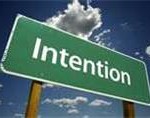
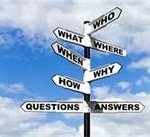
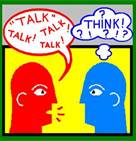

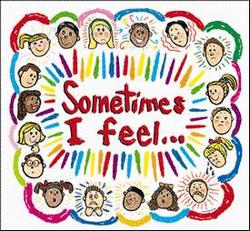
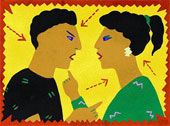
 For example, say to yourself, “I really feel hurt.” Do not try to focus on any thoughts such as, “He did not act fairly.” Aim at not replaying the ‘story’ of what happened or expanding the emotion. Your emotions may seem out of proportion because another person may have triggered a past emotion that never got discharged. See an example of this in Appendix A.
For example, say to yourself, “I really feel hurt.” Do not try to focus on any thoughts such as, “He did not act fairly.” Aim at not replaying the ‘story’ of what happened or expanding the emotion. Your emotions may seem out of proportion because another person may have triggered a past emotion that never got discharged. See an example of this in Appendix A. If you so desire, do what you can to intend or incubate a dream with emotion.You can even choose to dream of a past incident when you did not fully experience an emotion, such as a feeling that might arise at the end of a relationship.
If you so desire, do what you can to intend or incubate a dream with emotion.You can even choose to dream of a past incident when you did not fully experience an emotion, such as a feeling that might arise at the end of a relationship.

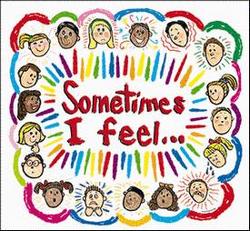


 While creating this workshop, I had the following dream:
While creating this workshop, I had the following dream: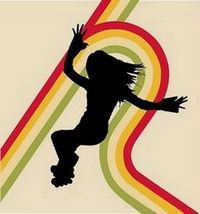
 Book in Proposal
Book in Proposal

 Beverly I. Kedzierski
Beverly I. Kedzierski